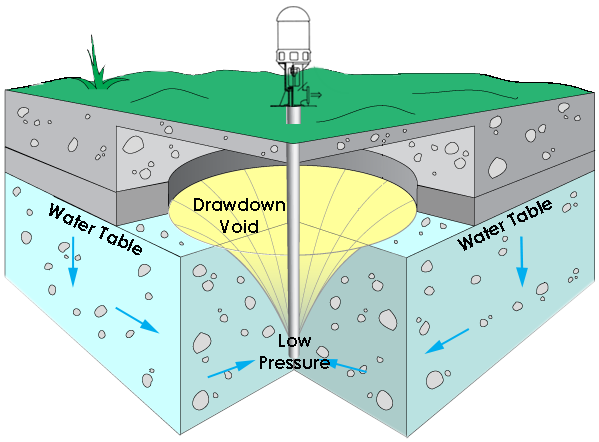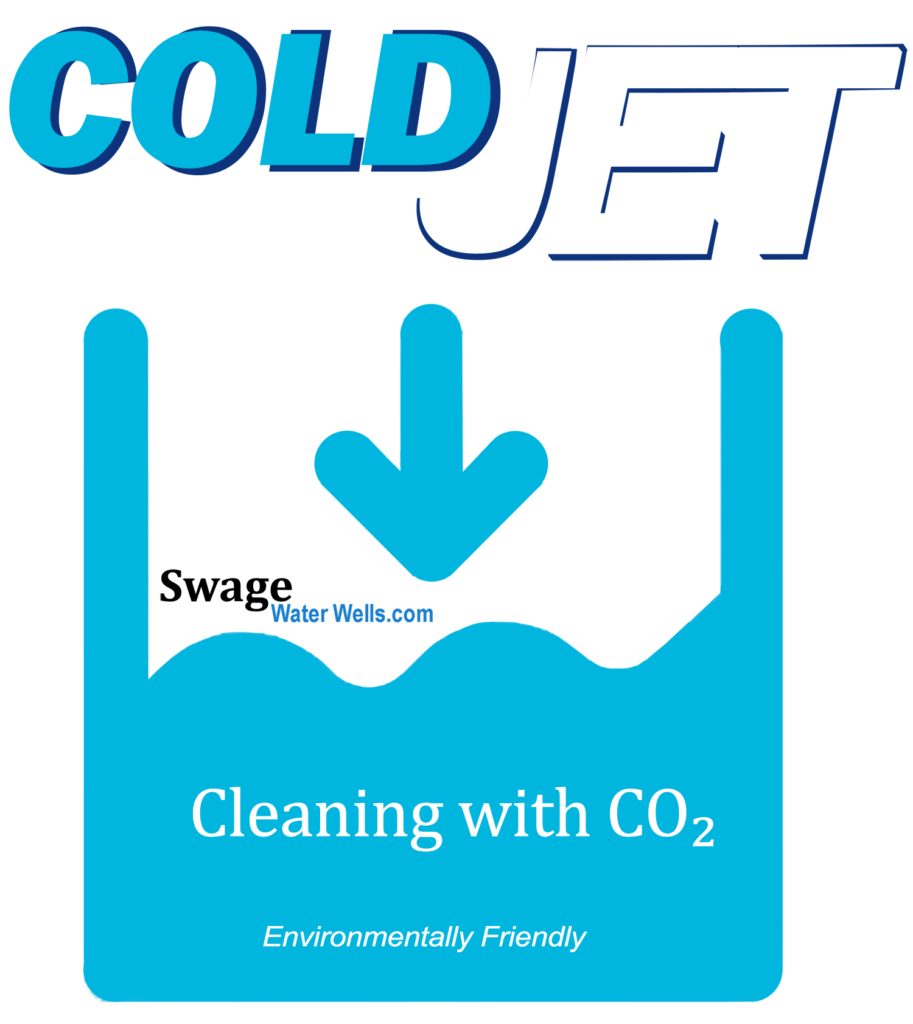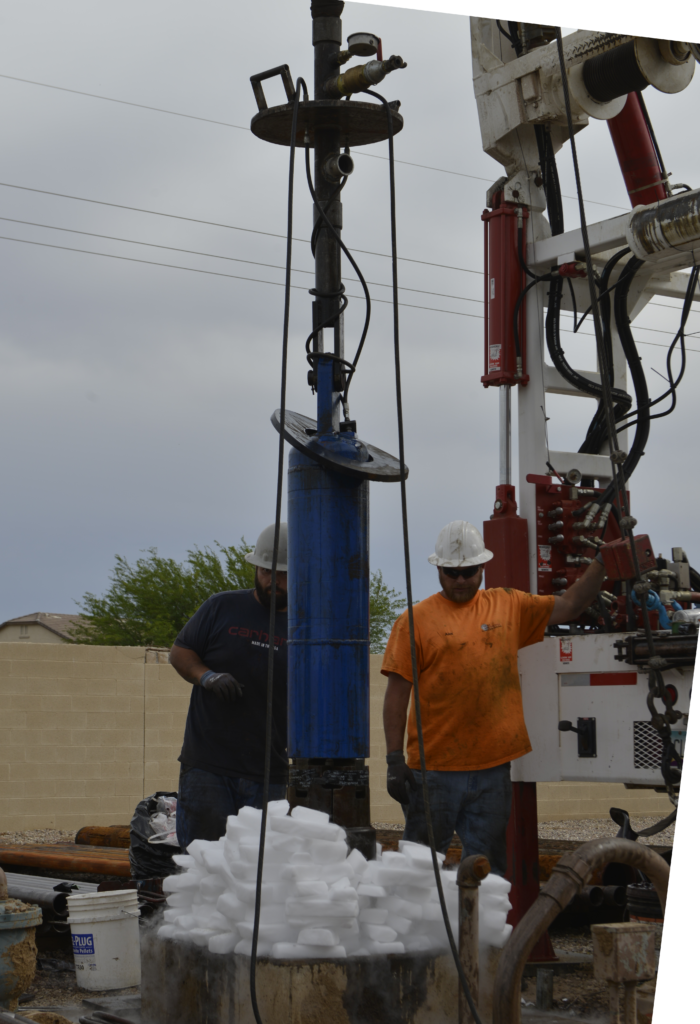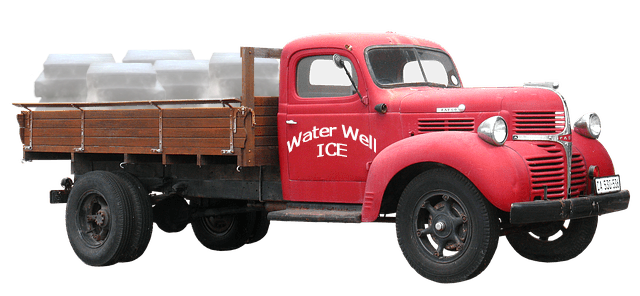The truth about wells
Wells are not drains… So don’t clean them like one! Wells work the opposite of a drain, groundwater flows into a well. The buildup on the inside walls has little effect on water pumping because it is on the non-producing side of a well. The only time a well slows flow from incrustation is when it is left idle for a long time.
Water bearing strata is full of clay, shale, sand and gravel and this makes it harder for water to travel to a well. Far out water moves slower and speeds up as it funnels towards a well and this tightens up a well’s water producing area.
Cleaning should be done to gain efficiency
Cleaning inside a well reduces wear to perforations and gives better access to the water outside. Cleaning outside is more important because it increases water yield while reducing pressure needed to flow water. Outside is where the big water is, and in wells it is the number of gallons per pound of pressure or gallons per foot of pulldown that gives a well its flow volume. The formula is simple, for every cubic foot of open area in a well’s draw area you get 7.48 more gallons of water using the same pumping effort.

Why some well cleanings don’t last
When one water producing area is clean more than another the well overdraws from that area. Because more water is moving in at a greater velocity in that area it fills back in faster. Thorough cleaning throughout a well’s vertical draw in area delivers the best long-lasting results.
Cleaning Can Prevent Water issues
Sand entry, surface contamination and all kinds of casing damage are a result of well water trying to keep up pumping volumes. Cleaning more often is a good investment to add longevity, prevent problems and avoid the sudden unexpected shut down.

Open up water strata
Slow or stop sand pumping
Remove calcified and mineral deposits
Bring water quality to acceptable levels
COLD JET
Solid CO₂ commonly known as dry ice has many uses in industry including cleaning water wells. To get good results in water wells we need to pay attention to science not myths. The cleaning energy in dry ice comes from cold boiling, slowly sublimating a solid into a pressurized gas inside containment.

Cold jet cleaning is a process of placing dry ice in a sealed well. Because water or CO₂ cannot rise in a sealed well, when the dry ice turns to gas it pushes water or water with chemistry out making the well a huge CO₂ container. When the well is unsealed the aquifer becomes a huge water gun shooting water in at high pressure. Cold jet cleaning is not inside cleaning it works outside to rejuvenate a well’s water bearing strata.

In most well cleaning procedures, including dropping dry ice in a well works, but it doesn’t last long. This is because the strong energy dissipates quickly as it travels outwards.
Cold jet works and lasts because it build strong cleaning energy outside. Then when released water jets towards a well washing out water bearing strata.
Expanding pressure outside slowly is safer than bursting, blasting or jetting against casing, but it requires a very strong control valve. Ours can open and close with more than 3500 pounds pushing against it.
Need a well cleaned?
Please call us:
(800) 961-WELL (9355)
We don’t drill the well, we don’t pump the water, we solve well water issues using the best methods possible to get a well back in service quickly.

Sacramento Office
Bob
Tel. 916 765-5221
Email: waterwellbob@gmail.com
Bakersfield Office
Mike
Tel. 916 779-0553
Email: wellboyh2o@gmail.com